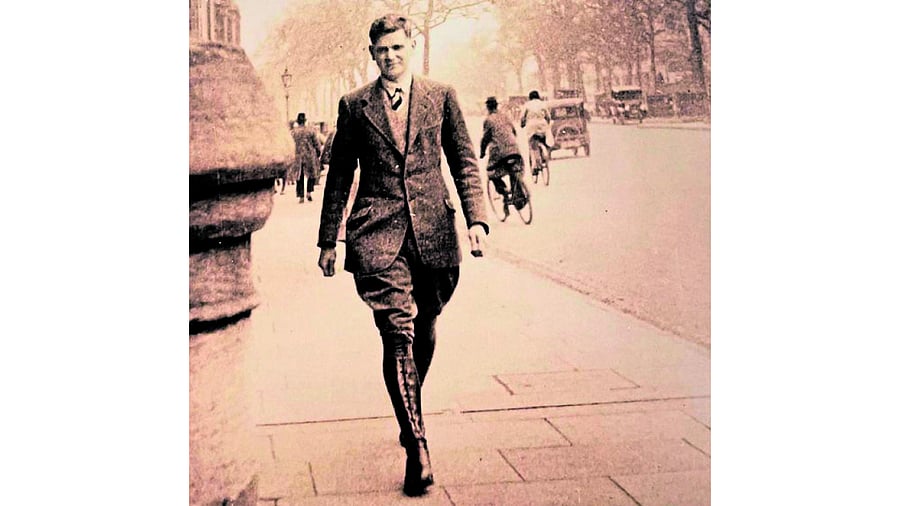Ever since my first visit to the United Kingdom, I kept searching for Scotsman Robert Stirrat Halliday. My father would always ask me if I got information about Halliday. The curiosity was because my grandfather Rao Saheb R T Katarki and Halliday were colleagues. On Halliday’s departure from India after independence in 1947, my grandfather stepped into his position in the Bombay Government.
The search led me to a manuscript titled “Indian Days” presented by Halliday on September 7, 2001, to the British Library, London. Indian Days is a compilation of notes and letters that Halliday wrote to his fiancée Martha Graham in London on what he experienced during his first posting as the Assistant Collector and Sub Divisional Magistrate at Belgaum in the southern Bombay Presidency (1933-1937), which now forms part of Karnataka.
Why should anyone be interested in the manuscript of Halliday? Well, the experiences of a 25-year-old Scottish boy in India offer a glimpse of how a bright Oxbridge graduate from a distant place with Scottish and English moorings lands in India — a place he had never seen before.
After his selection in the Indian Civil Service (ICS) — a coveted service of Secretary of State to govern British India with several powers, privileges and opportunities, Halliday sailed to India. On reaching Bombay in 1933, Halliday formally reported to the highest official at Bombay Presidency Government.
Cultural learnings
He gives an account of how he, a young British officer, was sensitised on caste and languages. He says - “All the Secretaries I spoke to wondered how I would like the changed political conditions…One or two said that I was lucky to be posted to Belgaum but one disadvantage is that the population there is partly Maratha and partly Lingayat so that I shall have to learn two languages instead of one.”
During the next three-and-a-half years, Halliday was part of regular rural camps at Gokak, Chikodi, Athani, Nippani and Nidoshi, to review law and order situations and assess the political developments. He also considered waiver of land revenue requests, supervised relief measures, oversaw malaria vaccination and conducted local institutional elections, etc. Halliday learned Kanarese (now Kannada), as required to earn increments.
Dealing with the outbreak of Cholera in Gokak in 1936, Halliday paints a picture of administrative apathy. He lamentingly expresses – “When the Assistant Director arrived in Gokak he sent for the Mamlatdar (Tahsildar) but the Mamlatdar replied that he was doing his puja (worship) and would come in two hours.”
ICS officials were trained to maintain strict impartiality to uphold bureaucratic and judicial traditions. Halliday indeed maintained his fairness. While trying some employees of Gokak Mills for assaulting the junior manager, the accused employees took objection to Halliday being a Magistrate in the case on the grounds that the General Manager Lancashire is his shikar (hunting) friend. Halliday conceded — “that seemed to me a reasonable request”.
Later career
Halliday did leave something for memory through his hard work for three-and-a-half years in Belgaum. He wrote on March 7, 1936 – “I have achieved fame. Chinchani Improvement Committee have requested that their new approach road be named after me — The Halliday-Chinchani Road.” Whether the road retains the name or not, in the passage of nine decades, is not clear.
From reading the manuscript, it seems as though Halliday did not miss much of English life in Belgaum. The greenery, palatial bungalows, rookies in the Cantonment and dancing in Belgaum Club kept freshmen in India close to Europe. Belgaum had a sizable presence of Europeans, particularly in the Cantonment.
Halliday was subsequently transferred to the judicial department under the Bombay High Court. A section of ICS officials who had displayed an aptitude for judicial work were deputed to the judiciary. One-third of High Court Judges were from the ICS cadre. The system continued even after independence and five of them became judges of the Supreme Court. One among them, Justice K. N. Wanchoo, became the Chief Justice of India in 1968.
Halliday served as the District and Sessions Judge of North Kanara at Karwar (Uttara Kannada) in 1941. It is the same position that Satyendranath Tagore held in 1881-84. Satyendranath was the first Indian appointed to the ICS cadre in 1862.
Decades of Halliday’s labouring in district places ended in 1943. On the declaration of independence in 1947, like most British officials, Halliday packed off from India, leaving behind his promising career.
Among the few British who lived in India, Justice Donald Falshaw, ICS became Chief Justice of the Punjab High Court. Justice William Broom, ICS became Judge of Allahabad High Court.
(Mohan Katarki is Senior Advocate, Supreme Court of India)
